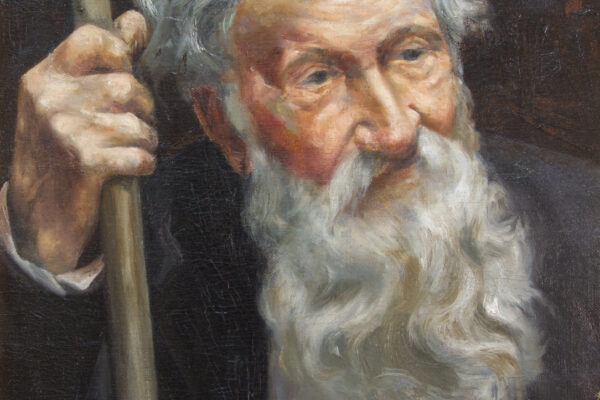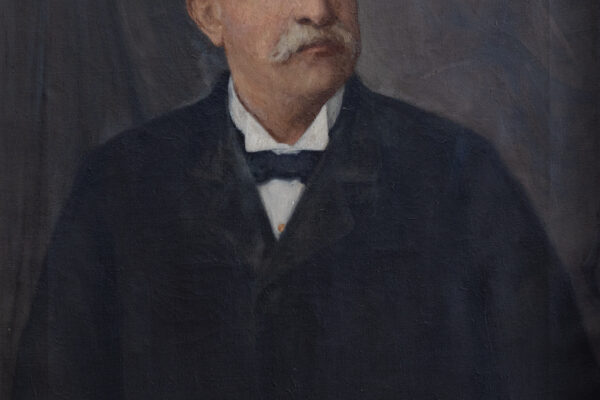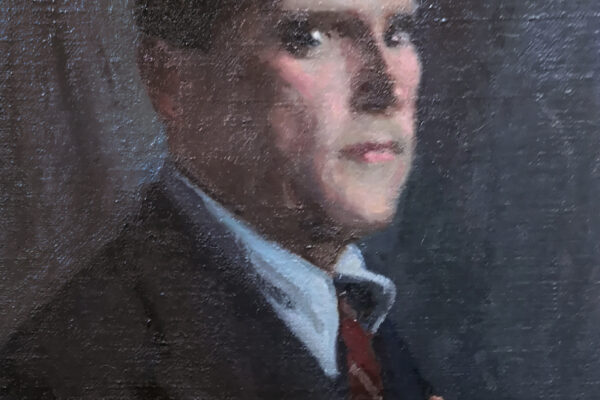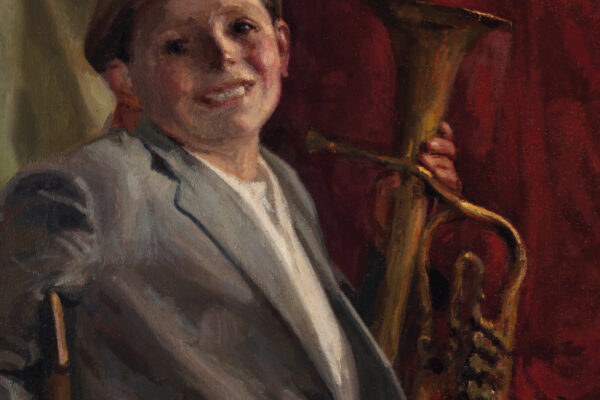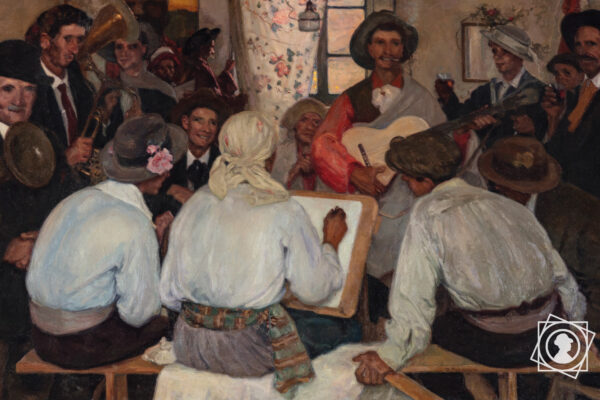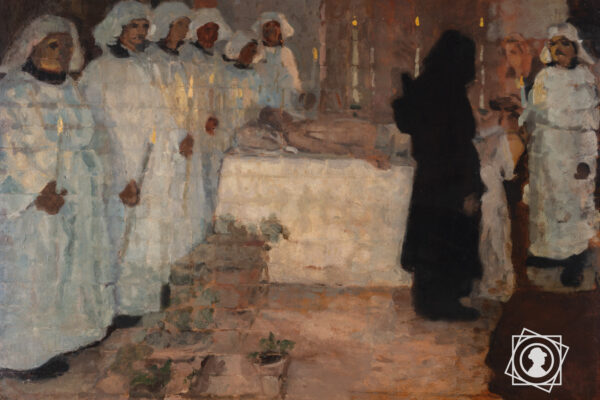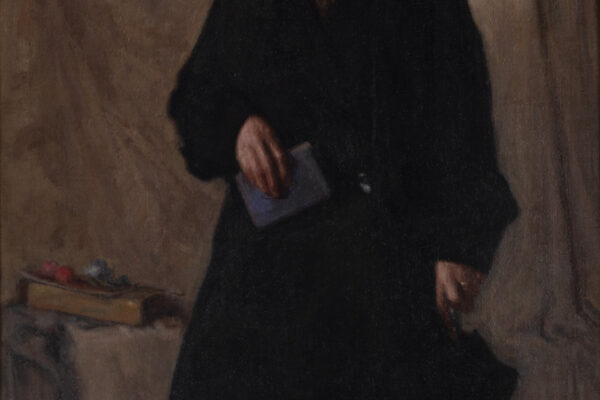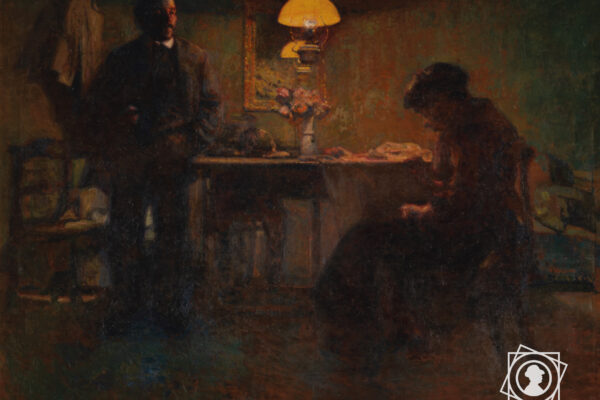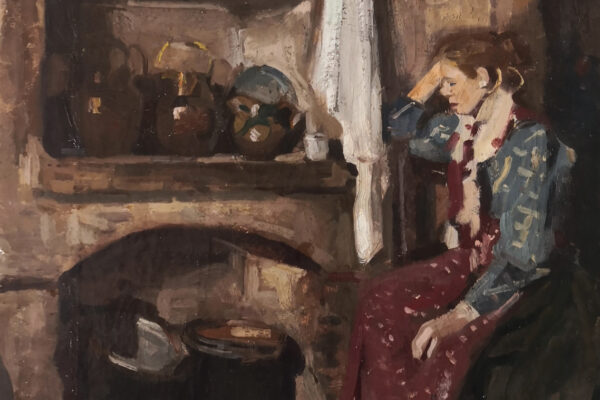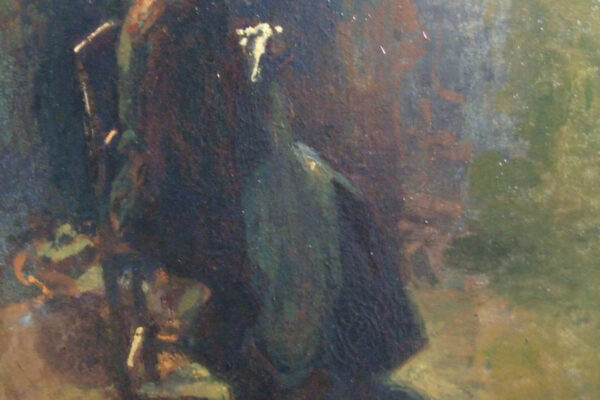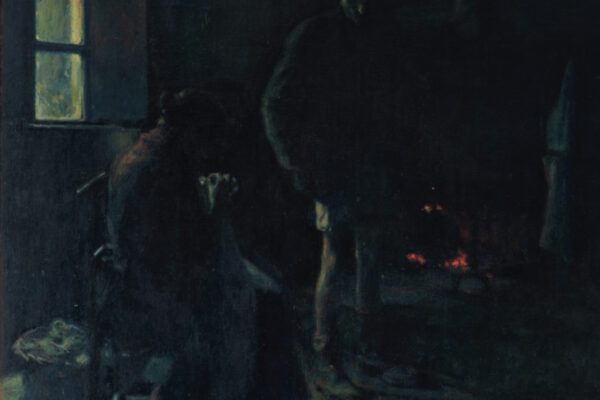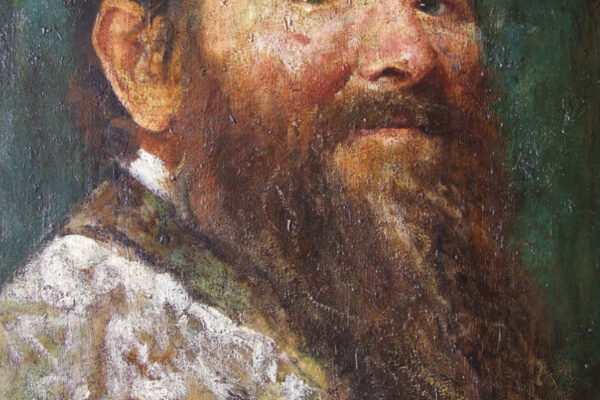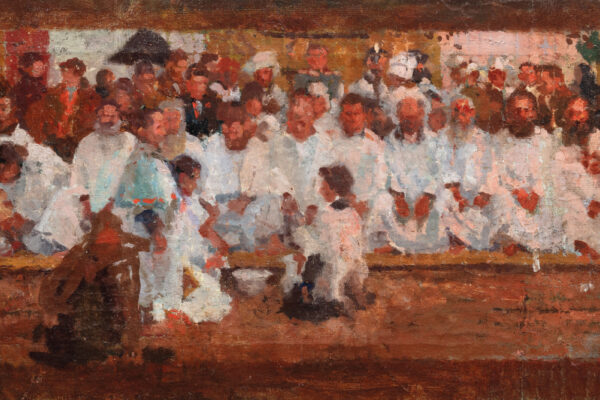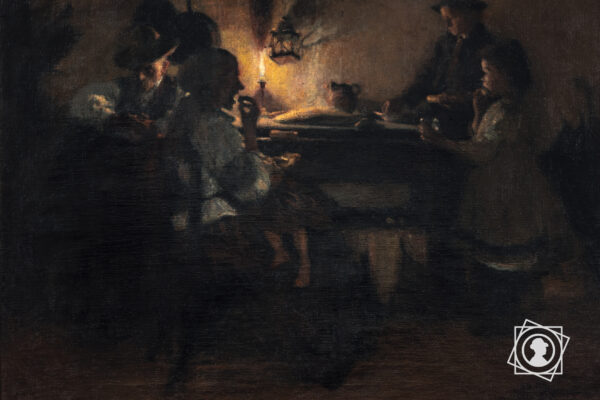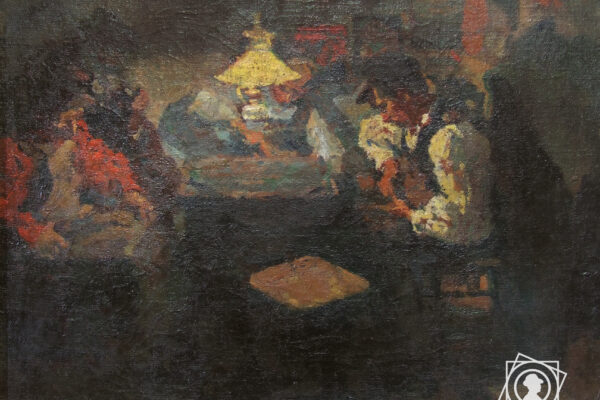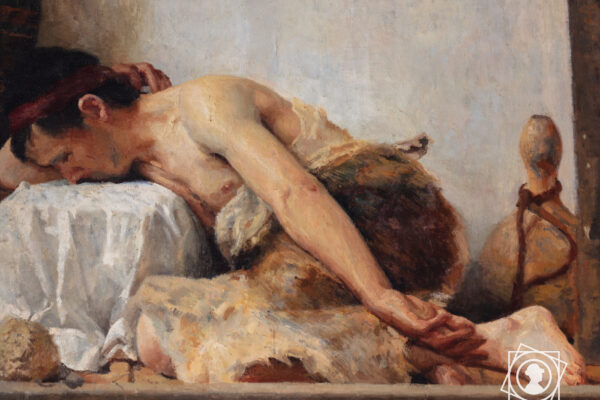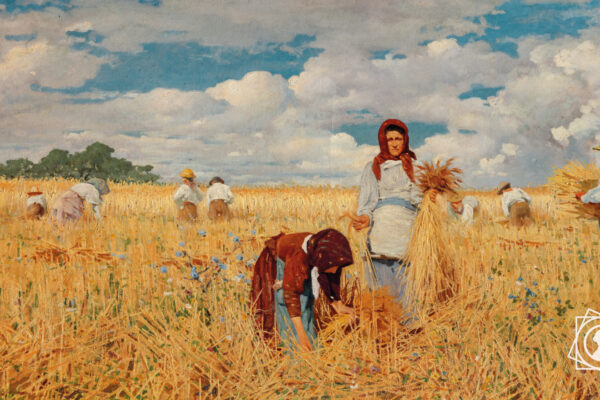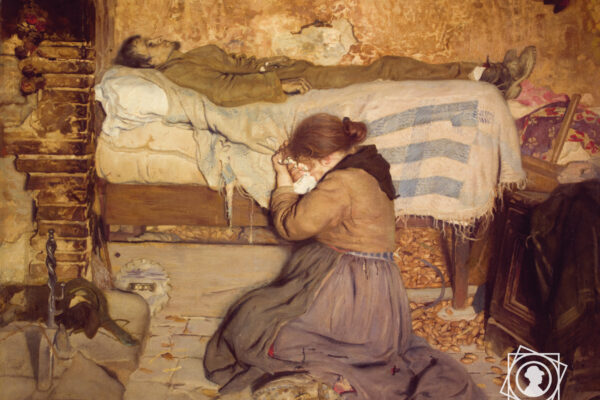Born in Manciano on 30 September 1866 into a well-to-do family of small landowners, when Paride Pascucci was seven years old his mother died, and he had trouble accepting his father’s new relationship. Probably on the advice of his relative Pietro Aldi, a successful painter, between 1882 and 1891 he studied at the Istituto di Belle Arti in Siena, with an interruption of three years while serving in the military in the Veneto region.
Returning to Manciano after receiving his diploma, for work he lodged in a room in the home of the Garbati peasant family. In 1895 he painted Heroes of Maremma, his first picture that showed his full adherence to the tenets of realism, which remained his style for his entire career.
After being granted a Biringucci fellowship by the Società di Esecutori di Pie Disposizioni in Siena in 1897, he moved to Rome, where he entered the studio of Cesare Maccari, becoming his student and assistant. From 1899 he participated regularly in the exhibitions of the Società Amatori e Cultori di Belle Arti in Rome, presenting watercolours and oil paintings. At the same time, Pascucci assisted Maccari on large fresco cycles in the Basilica della Santa Casa in Loreto, the Palace of Justice in Rome, and the Cathedral of Nardò, which he completed after Maccari’s death in 1919.
His first public success came in 1909 in Rome with his painting The Apostles, purchased by the Galleria Nazionale d’Arte Moderna. The canvas shows his full adherence to international naturalism, subsequently confirmed with The Kiss After the Procession, shown in Rome in 1911 (now in Rome, Galleria Comunale d’Arte Moderna e Contemporanea).
With the large canvas of The Hero’s Return, he participated in 1924 in the Ussi competition in Florence, winning the Spranger Prize. He was given this same prestigious prize in 1929 for The Dead Christ: Before the Procession, now in the church of San Leonardo in Manciano. That same year he was awarded the silver medal by the Ministry of Education for his works exhibited at the first Sienese show of the Fascist Union of Tuscan Artists.
During the 1930s Pascucci, by now growing old, returned permanently to Manciano, yet still busy working. In 1934 he participated in the Ussi Prizes in Florence with Carnival Revelry, and The Siesta, now in the collection of the City of Grosseto, yet another realistic image of the daily labour of workers, is dated 1939.
He died on 2 July 1954 in Manciano.
Paride Pascucci


